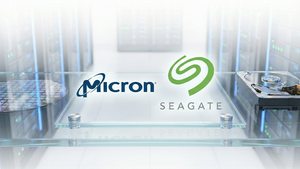
In a monumental leap forward for auditory health, cutting-edge artificial intelligence (AI) is transforming the landscape of hearing assistance, offering unprecedented clarity and connection to millions worldwide. This isn't merely an incremental upgrade; it's a paradigm shift, moving beyond simple sound amplification to deliver personalized, adaptive, and profoundly intelligent solutions that promise to dramatically improve the quality of life for individuals grappling with hearing impairments. The immediate significance of these advancements lies in their ability to not only restore hearing but to enhance the brain's ability to process sound, mitigate listening fatigue, and integrate seamlessly into the user's daily life, offering a newfound sense of engagement and ease in communication.
The Inner Workings: Deep Neural Networks and Adaptive Intelligence
At the heart of this AI revolution are sophisticated Deep Neural Networks (DNNs), algorithms designed to emulate the human brain's remarkable capacity for sound processing. These DNNs operate in real-time, meticulously analyzing complex auditory environments to discern and differentiate between speech, music, and various forms of background noise. This intelligent discrimination allows AI-powered hearing devices to prioritize and amplify human speech while simultaneously suppressing distracting ambient sounds, thereby creating a significantly clearer and more natural listening experience, particularly in notoriously challenging settings like bustling restaurants or crowded social gatherings. This advanced filtering mechanism represents a radical departure from older technologies, which often amplified all sounds indiscriminately, leading to a cacophony that could be more disorienting than helpful. The result is a substantial reduction in "listening fatigue," a pervasive issue for many hearing aid users who expend considerable cognitive effort trying to decipher conversations amidst noise.
Technical specifications of these new devices often include dedicated Neuro Processing Units (NPUs) or DNN accelerator engines, specialized computer chips that are optimized for AI computations. For instance, Starkey Hearing Technologies' (NASDAQ: STARK) Edge AI and Genesis AI platforms utilize revolutionary Neuro Processors with integrated DNNs, capable of making billions of adjustments daily. Similarly, Oticon's (CPH: OTIC) More and Intent models leverage their proprietary MoreSound Intelligence and DNN 2.0, with the Intent model featuring 4D Sensor technology to interpret user communication intentions. These advanced processors allow for instantaneous separation of speech frequencies from background noise, leading to remarkable improvements in speech recognition. This differs fundamentally from previous analog or even early digital hearing aids that relied on simpler algorithms for noise reduction and amplification, lacking the contextual understanding and real-time adaptability that DNNs provide. Initial reactions from the AI research community and industry experts have been overwhelmingly positive, hailing these developments as a major breakthrough that addresses long-standing limitations in hearing aid technology, paving the way for truly intelligent auditory prosthetics.
Market Dynamics: Reshaping the Hearing Health Industry
The emergence of these advanced AI hearing technologies is poised to significantly reshape the competitive landscape of the hearing health industry, benefiting established players and creating new opportunities for innovative startups. Companies like Starkey Hearing Technologies, Oticon (part of GN Group (CPH: GN)), Phonak (a brand of Sonova (SIX: SOON)), Widex (part of WS Audiology), and Signia (part of WS Audiology) stand to gain substantial strategic advantages. These industry leaders, already heavily invested in R&D, are leveraging their deep expertise and market reach to integrate sophisticated AI into their next-generation devices. Starkey, for example, has been a pioneer, introducing the first AI-powered hearing aid in 2018 and continuing to innovate with their Edge AI and Genesis AI platforms, which also incorporate health and wellness monitoring. Oticon's Oticon Intent, with its 4D Sensor technology, demonstrates a focus on understanding user intent, a critical differentiator.
The competitive implications for major AI labs and tech companies are also significant, as the underlying AI advancements, particularly in real-time audio processing and machine learning, are transferable across various domains. While not directly producing hearing aids, tech giants with strong AI research divisions could potentially collaborate or acquire specialized startups to enter this lucrative market. This development could disrupt existing products and services by rendering older, non-AI-powered hearing aids less competitive due to their limited functionality and less natural sound experience. Startups like Olive Union are carving out niches by offering budget-friendly smart hearing aids powered by machine learning, demonstrating that innovation isn't exclusive to the market leaders. Market positioning will increasingly hinge on the sophistication of AI integration, personalization capabilities, and additional features like health monitoring and seamless connectivity, pushing companies to continually innovate to maintain strategic advantages.
A Broader AI Tapestry: Impacts and Ethical Considerations
This wave of AI innovation in hearing assistance fits squarely into the broader AI landscape's trend towards hyper-personalization, real-time adaptive systems, and ambient intelligence. It mirrors advancements seen in other fields where AI is used to augment human capabilities, from predictive analytics in healthcare to intelligent assistants in smart homes. The impact extends beyond individual users to public health, potentially reducing the social isolation often associated with hearing loss and improving overall cognitive health by ensuring better auditory input to the brain. Furthermore, the integration of health and wellness monitoring, such as fall detection and activity tracking, transforms hearing aids into comprehensive health devices, aligning with the growing trend of wearable technology for continuous health management.
However, these advancements also bring potential concerns. Data privacy is paramount, as AI-powered devices collect vast amounts of personal auditory and health data. Ensuring the secure handling and ethical use of this sensitive information will be crucial. There are also questions about accessibility and affordability, as cutting-edge AI technology can be expensive, potentially widening the gap for those who cannot afford the latest devices. Comparisons to previous AI milestones, such as the breakthroughs in natural language processing or computer vision, highlight a similar trajectory: initial skepticism followed by rapid innovation and widespread adoption, fundamentally changing how humans interact with technology and the world. This development underscores AI's profound potential to address real-world human challenges, moving beyond theoretical applications to deliver tangible, life-altering benefits.
The Horizon: Future Developments and Uncharted Territories
The trajectory of AI in hearing assistance points towards even more sophisticated and integrated solutions on the horizon. Near-term developments are expected to focus on further refining DNN algorithms for even greater accuracy in sound separation and speech enhancement, particularly in extremely challenging acoustic environments. We can anticipate more advanced personalized learning capabilities, where devices not only adapt to sound environments but also to the user's cognitive state and communication intent, perhaps even predicting and preempting listening difficulties. The integration with other smart devices and ecosystems will become even more seamless, with hearing aids acting as central hubs for auditory input from various sources, including smart homes, public transport systems (via technologies like Auracast), and virtual reality platforms.
Long-term potential applications and use cases are vast. Imagine hearing aids that can provide real-time language translation, not just transcription, or devices that can filter out specific voices from a crowd based on user preference. There's also the potential for AI to play a significant role in early detection of auditory processing disorders or even neurological conditions by analyzing subtle changes in how a user processes sound over time. Challenges that need to be addressed include miniaturization of powerful AI processors, extending battery life to support complex computations, and ensuring robust cybersecurity measures to protect sensitive user data. Experts predict that the next decade will see hearing aids evolve into truly intelligent, invisible personal assistants, offering not just hearing support but a comprehensive suite of cognitive and health-monitoring services, further blurring the lines between medical device and advanced wearable technology.
A New Auditory Epoch: A Comprehensive Wrap-Up
The advent of advanced AI in hearing assistance marks a pivotal moment in the history of auditory technology. The key takeaways are clear: AI, particularly through Deep Neural Networks, has moved beyond simple amplification to intelligent, adaptive sound processing, offering unprecedented clarity and personalization. This development significantly mitigates challenges like background noise and listening fatigue, fundamentally improving the quality of life for individuals with hearing impairments. The industry is undergoing a significant transformation, with established companies gaining strategic advantages through innovation and new startups emerging with disruptive solutions.
This development's significance in AI history lies in its demonstration of AI's capacity to deliver tangible, human-centric benefits, addressing a widespread health issue with sophisticated technological solutions. It underscores a broader trend of AI moving from abstract computational tasks to deeply integrated, assistive technologies that augment human perception and interaction. The long-term impact is profound, promising not just better hearing, but enhanced cognitive function, greater social engagement, and a new paradigm for personal health monitoring. In the coming weeks and months, watch for continued announcements from leading hearing aid manufacturers showcasing further refinements in AI algorithms, expanded health tracking features, and more seamless integration with other smart devices. The future of hearing is not just about listening; it's about intelligent understanding and effortless connection, powered by the relentless march of artificial intelligence.
This content is intended for informational purposes only and represents analysis of current AI developments.
TokenRing AI delivers enterprise-grade solutions for multi-agent AI workflow orchestration, AI-powered development tools, and seamless remote collaboration platforms.
For more information, visit https://www.tokenring.ai/.







